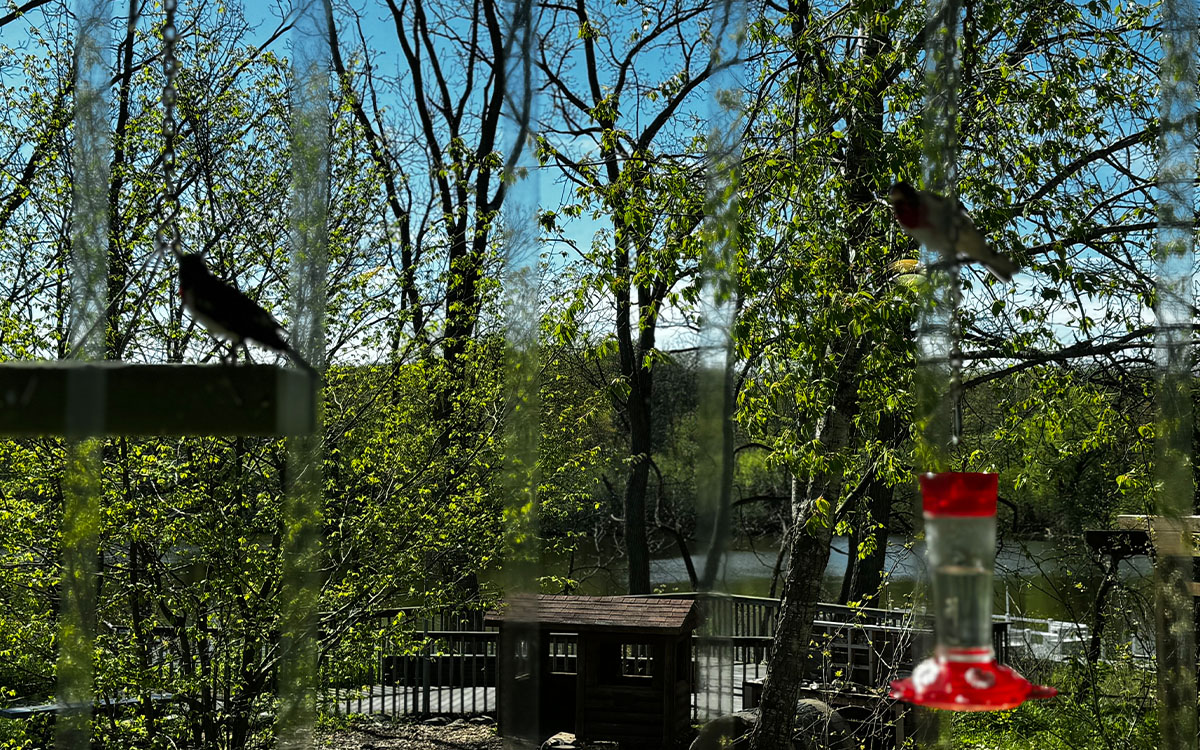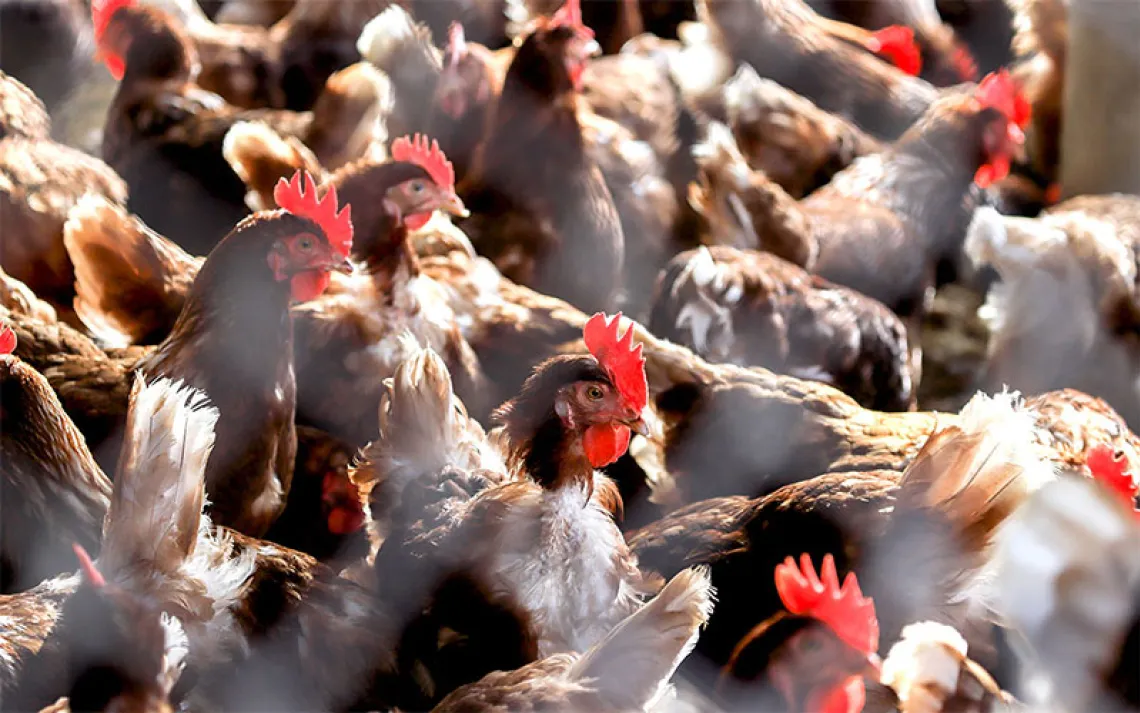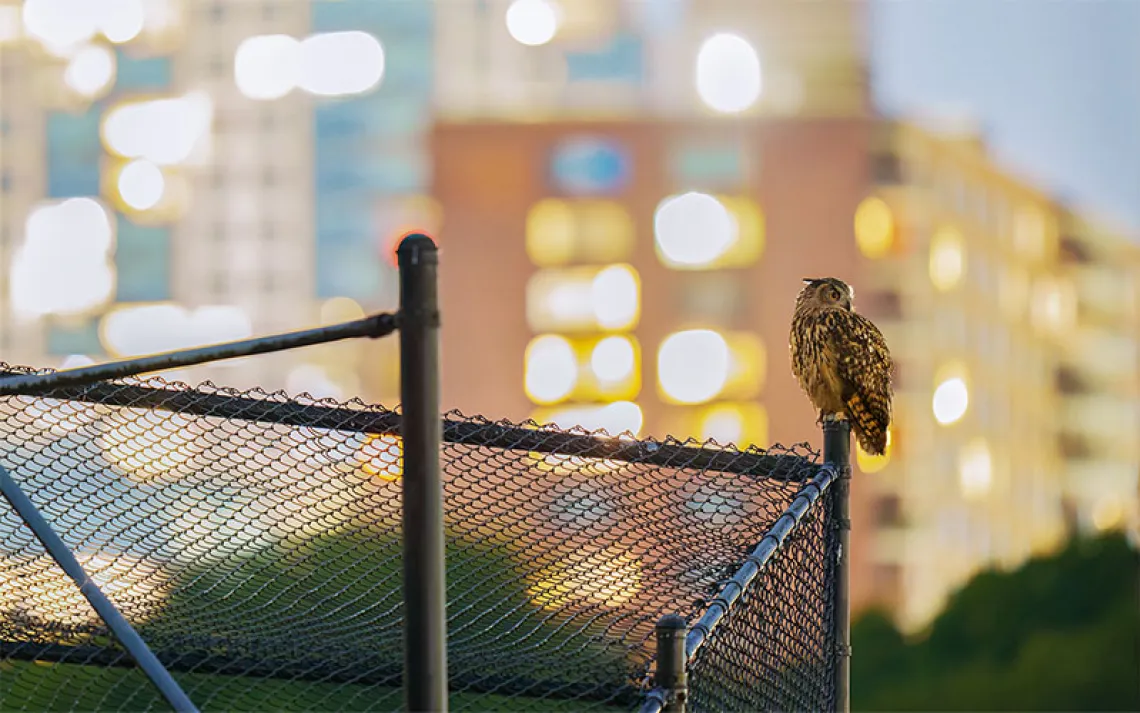ENVIRONMENT EXPLAINED
How Do I Protect Birds From Window Collisions?
With these few key tips, you can save a whole lot more birds

Hundreds of millions of birds die each year by flying into glass windows. As a budding birder myself, I find this heartbreaking. If you’re like me, you want to do your part to help birds avoid a collision. But what’s the best way to do that?
Many people think window decals are the best solution, but some studies have shown that they are rendered useless if not used properly. Scrolling through Amazon, you will no doubt find hundreds of decal options, almost none of which have ever been evaluated for effectiveness and many of which offer little to no instruction on proper installation. Here’s what you need to know about how to reduce the number of birds colliding with windows at your home or office.
Window decals
When a bird looks at a window, it either sees through the window into the house/office or it sees the reflection of the sky and clouds. In both cases, the bird perceives an open flight path to fly through. Bird window decals break this reflection if the decal is installed on the outside of the window. Unfortunately, most people install window decals on the inside of the window, which is much easier but renders the gambit ineffective because the reflective side is facing inward instead of outward.
Additionally, many decals fade from the sun and need to be replaced every six months or so, which few people do. Cheap window decals are not a “set it and forget it” situation, as they will be rendered completely ineffective as soon as they fade.
Spacing is also an issue. Window decals should be spaced no more than two inches apart so that birds don’t try to fly through the gaps. This is particularly the case for small birds, like hummingbirds, which can fit through narrow spaces and will be those most likely to try to fly through sticker gaps. Many well-intentioned bird lovers (such as myself at one point) throw up a few big bird decals and pat themselves on the back, completely unaware of how ineffective the strategy is.
Paul Groleau, the vice president of FeatherFriendly, which offers DIY, commercial, and professional long-term solutions to prevent bird collisions, says that some window decals, particularly those shaped like large birds of prey, offer a false sense of security. According to Groleau, large hawk stickers are widely available and very popular but don’t work for the most part. Many bird lovers wrongly believe (in part due to dishonest marketing by decal manufacturers) that smaller birds will be too scared of the hawk to fly into the window. However, Groleau explains that birds only see these images as black blobs; they don’t actually see hawks. What’s more important than the shape of the decal is how it’s installed—outdoors, spaced no more than two inches apart, and regularly changed if using nonprofessional versions.

Bird tape
Bird tape is a great way to make glass more visible to birds, and there are both professional and DIY options. FeatherFriendly produces DIY window tape, dots, and stickers that have been tested for effectiveness and are easy to install (their detailed instructions also help ensure proper placement). Their ABC bird tape is approved by the American Bird Conservancy and can be easily applied to windows diagonally or vertically. Just like bird window decals, this tape must be applied to the exterior of the window and spaced less than two inches apart.
Their Pro-DIY Dots are another great option, as they cover a large enough area to protect birds without obstructing your view (a common problem when using bird-shaped window decals).

Sign up to receive Sierra News & Views
Get articles like this one sent directly to your inbox weekly.
With this action you affirm you want to receive Sierra Club communications and may vote on policy designated by the Sierra Club Board.
Carol Howard, a seasonal naturalist with Milwaukee’s Wehr Nature Center, says they put window tape on the nature center’s windows a few years ago and immediately noticed a decrease in the number of bird collisions. Howard notes that some birds do occasionally still collide, but the center hasn’t noticed any die since they added the window treatments. She also has noticed birds actually slowing down as they approach the taped-up windows, which Howard takes as a clear sign of success. Considering the dozen or so bird feeders the center has hung around these treated windows, and how many birds they attract, her assumption is a safe bet.
Acopian bird savers
Though the name sounds a bit fancy, acopian bird savers are a simple and straightforward set-up that could make for a great home DIY project. To make them, hang preshrunk paracord (which is essentially a thin nylon rope) a few inches apart in front of a window to break the window’s reflection.
Because birds are attracted to this reflection (which, again, they often interpret as the sky), breaking it can prevent them from flying into it. Eliminate the reflection and you eliminate the risk of birds flying into the window. A birding lodge in Costa Rica that installed acopian bird savers saw a 99 percent reduction in bird collisions and made this helpful video explaining how to install the paracords.
Landscaping and design
Christine Sheppard, director of the glass collisions program at the American Bird Conservancy, says that you can’t make a bird-friendly building through landscaping alone, but there are some steps you can take to avoid problems. For instance, strategically placing bird feeders, birdbaths, fruit trees, and berry bushes away from windows can help encourage birds to stop farther away from windows, thereby decreasing the chance they may fly into the glass.
In addition to installing reputable window decals, Sheppard recommends the following landscaping tips:
- Position bird feeders either very far from windows (at least 30 feet) or very close (within three feet)
- Space indoor plants away from windows
- Consider installing external screens
- Minimize indoor lighting at night
- Avoid landscaping designs like walkways, passageways, and edges, which funnel birds toward glass panes
- Avoid using glass in walkways and guard rails
- Avoid planting fruit trees or berry bushes adjacent to glass or within 30 feet of the windows
 The Magazine of The Sierra Club
The Magazine of The Sierra Club



